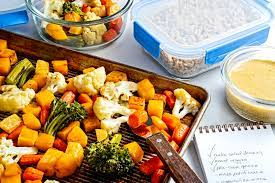In today’s fast-paced world, it’s easy to fall into the trap of ordering takeout or dining out regularly. While convenient, this habit can quickly drain your wallet. The good news is that, with a little planning and creativity, you can enjoy delicious, nutritious meals without breaking the bank. In this blog post, we’ll explore how to make a budget-friendly meal plan that helps you save money while still satisfying your taste buds.
1. Assess Your Current Spending

Before you start planning your budget-friendly meals, take a look at your current spending habits. Review your grocery receipts and dining-out expenses for the past month. This will give you a clear picture of where your money is going and help you identify areas where you can cut back.
2. Set a Realistic Budget

Once you have an idea of your current spending, set a realistic monthly food budget. Consider your income, fixed expenses, and savings goals. Allocate a portion of your budget for groceries and eating out, but be mindful not to overspend. Having a clear budget in mind will guide your meal planning efforts.
3. Plan Your Meals

Planning your meals in advance is the key to saving money. Start by creating a weekly or monthly meal plan. Consider the following tips:
- Use What You Have: Take stock of ingredients you already have in your pantry, fridge, and freezer. Incorporate these items into your meal plan to reduce waste.
- Include Budget-Friendly Staples: Plan meals around affordable staples like rice, pasta, beans, lentils, and canned vegetables. These ingredients are not only cost-effective but also versatile.
- Embrace Meatless Meals: Meat can be one of the priciest items on your grocery list. Opt for meatless meals like vegetable stir-fry, bean chili, or pasta with marinara sauce to save money.
- Leftovers Are Your Friend: Plan for leftovers and repurpose them into new meals. For example, turn last night’s roasted chicken into chicken salad sandwiches for lunch.
4. Create a Shopping List

Once you’ve outlined your meals, create a shopping list. Stick to your list while at the grocery store to avoid impulse purchases. Shopping with a list ensures that you buy only what you need, reducing food waste and overspending.
5. Shop Smart
To get the most bang for your buck, keep these shopping tips in mind:
- Buy in Bulk: Purchase non-perishable items in bulk when they are on sale. This can save you money in the long run.
- Use Coupons and Discounts: Keep an eye out for coupons, discounts, and loyalty programs at your grocery store. Many stores offer weekly specials and digital coupons.
- Compare Prices: Don’t be afraid to compare prices between brands and store brands. Sometimes, the generic option is just as good as the name brand.
6. Prep and Cook Efficiently

Make the most of your ingredients by prepping and cooking efficiently:
- Batch Cooking: Cook in larger quantities and freeze portions for later use. This can save you time and money on future meals.
- Meal Prep: Spend a few hours on the weekend prepping ingredients (washing, chopping, marinating) to make cooking during the week more efficient.
- Use Leftovers Creatively: Turn leftovers into new dishes. For example, roast vegetables from dinner can be added to a frittata for breakfast.
7. Stay Flexible
Lastly, be open to adjusting your meal plan based on sales, seasonal produce, and your family’s preferences. Flexibility can help you take advantage of discounts and reduce food waste.
Conclusion
In conclusion, making a budget-friendly meal plan is a smart way to save money and eat well. By assessing your spending, setting a budget, planning your meals, and shopping smart, you can enjoy delicious homemade meals without breaking the bank. Happy cooking and happy savings!
Read More
- Your Google Account Might Be Deleted Soon
- Can Humanoid Robot Servers Replace Human Waiters?
- Reduce Wrinkles: Getting Rid of Wrinkles
- Vegetable Garden: How to Grow Your Own Vegetables


